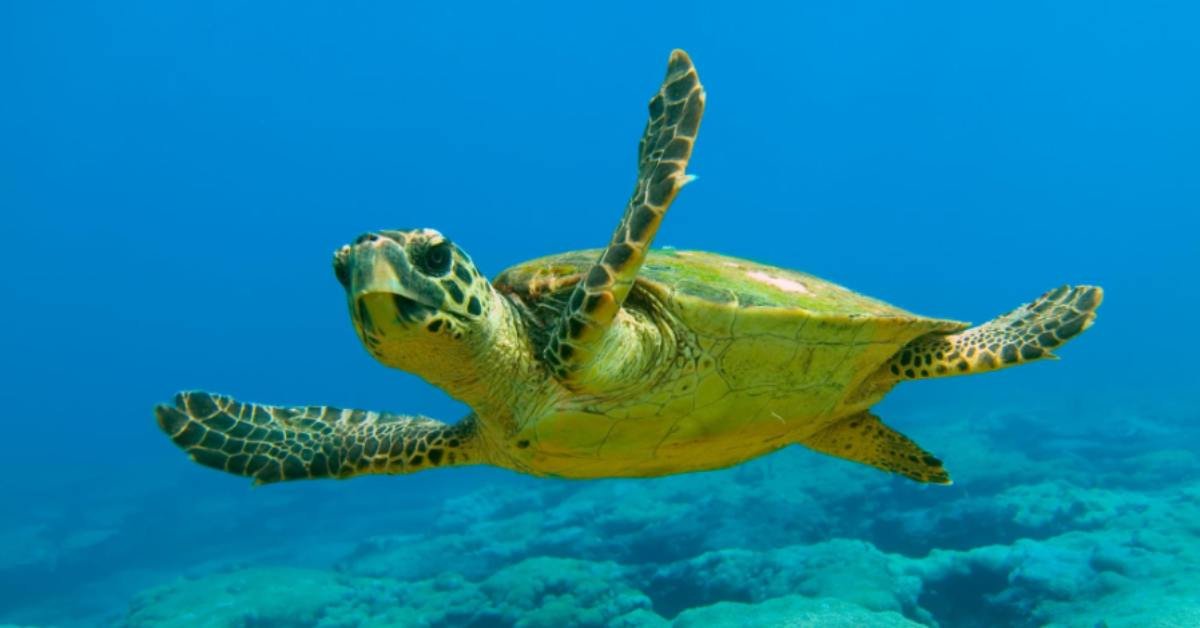The Taimai Turtle is one of the ocean’s most awe-inspiring and mysterious creatures. Known for its striking features, deep history, and vital role in marine ecosystems, the Taimai Turtle has captured the attention of marine biologists and conservationists alike. As with many sea turtle species, the Taimai Turtle faces significant threats, making it more critical than ever to understand and protect this majestic creature.
This article delves deep into the secrets of the Taimai Turtle, exploring its behaviour, habitat, challenges, and ongoing efforts to ensure its survival.
The Unique Characteristics of the Taimai Turtle
Physical Appearance
The Taimai Turtle stands out due to its distinct physical characteristics. It has a large, robust shell with intricate patterns, often adorned with shades of green, brown, and sometimes gold. These unique patterns serve as camouflage in the ocean’s depths and contribute to its majestic appearance. Adult Taimai Turtles can grow up to 1.2 meters long and weigh over 200 kilograms.
Unlike other sea turtles, the Taimai has a slightly more elongated head and sharp beak, which it uses to feed on various marine organisms. This beak is particularly suited for feeding on jellyfish, crustaceans, and other soft-bodied sea creatures.
Lifespan and Size
Taimai Turtles have a long lifespan, often living between 50 to 70 years in the wild. Some researchers believe they can live even longer under optimal conditions. Their slow growth and late maturity, usually between 20 and 30 years, make them vulnerable to environmental threats.
Habitat and Behavior of the Taimai Turtle
Where Do Taimai Turtles Live?
Taimai Turtles are primarily found in tropical and subtropical waters, with populations scattered across the Pacific and Indian Oceans. They prefer shallow coastal habitats, such as coral reefs, lagoons, and seagrass meadows, which provide abundant food sources. However, they are known to undertake long migrations, often travelling thousands of kilometres between feeding grounds and nesting beaches.
One of the most intriguing aspects of Taimai Turtle’s behaviour is their ability to return to the beach where they were born decades later to lay their eggs. This phenomenon, known as natal homing, showcases their extraordinary navigation abilities, which remain one of nature’s greatest mysteries.
Diet and Feeding Patterns
The Taimai Turtle is an omnivore with a diet that includes jellyfish, crustaceans, molluscs, and seagrasses. Their strong beak allows them to crush and consume hard-shelled prey, making them one of the more versatile feeders among sea turtles. Their feeding habits play a critical role in maintaining healthy marine ecosystems. For example, by keeping jellyfish populations in check, Taimai Turtles help balance marine food chains.
Conservation Status and Threats Facing the Taimai Turtle
Unfortunately, the Taimai Turtle is classified as endangered due to several human-induced and environmental factors. Here are the primary threats they face:
Habitat Loss
Coastal development and pollution have severely affected the habitats of Taimai Turtles. The destruction of coral reefs and seagrass meadows, which serve as vital feeding grounds, has led to a decline in their population. Furthermore, nesting beaches are increasingly being disrupted by human activity, such as tourism and construction, which makes it difficult for females to lay eggs safely.
Climate Change
The rising global temperatures and melting ice caps significantly impact sea turtle populations. For the Taimai Turtle, climate change presents two significant threats: rising sea levels and temperature shifts. Higher sand temperatures on nesting beaches affect the sex ratio of hatchlings, as warmer sand tends to produce more female turtles. A skewed sex ratio could lead to population declines over time. Rising sea levels threaten nesting sites and submerging beaches, reducing viable nesting grounds.
Pollution and Marine Debris
Plastic pollution is a deadly threat to Taimai Turtles. These creatures often mistake floating plastic bags for jellyfish, ingesting them and leading to fatal blockages in their digestive systems. Fishing gear like nets and lines is dangerous as turtles can entangle and drown.
Poaching and Illegal Trade
Taimai Turtles have long been hunted for their shells, meat, and eggs. Despite international laws protecting sea turtles, poaching remains problematic in certain regions, where their shells are still highly prized for decorative items and jewellery.
Ongoing Conservation Efforts
Despite the challenges the Taimai Turtle faces, several initiatives are underway to protect this magnificent species.
Protected Marine Areas
Many countries have established Marine Protected Areas (MPAs) where human activity is restricted, and Taimai Turtles can nest and feed without disturbance. These MPAs help preserve critical habitats and give turtle populations a chance to recover.
Community-Based Conservation
In several regions, local communities are actively involved in sea turtle conservation. Programs that encourage sustainable fishing practices, eco-tourism, and beach clean-ups are helping to reduce the negative impact of human activity on turtle populations. These initiatives promote awareness and provide economic alternatives to poaching by engaging local populations.
Research and Monitoring
Scientists continue to monitor Taimai Turtle populations through tagging programs and satellite tracking. These studies provide invaluable data on migration patterns, nesting behaviours, and population health, which inform conservation strategies.
FAQs About the Taimai Turtle
What makes the Taimai Turtle different from other sea turtles?
The Taimai Turtle is unique in its physical appearance, including its ornate shell patterns and beak structure, allowing it to feed on various marine organisms. It also has distinct migration patterns, often travelling vast distances between feeding and nesting grounds.
How long can a Taimai Turtle live?
Taimai Turtles have an average lifespan of 50 to 70 years, though some individuals may live longer in ideal conditions.
What can I do to help protect Taimai Turtles?
You can contribute to turtle conservation by reducing plastic use, supporting eco-friendly tourism, participating in beach clean-ups, and donating to organizations focused on marine conservation.
Where can Taimai Turtles be found?
Taimai Turtles inhabit tropical and subtropical waters, primarily in the Pacific and Indian Oceans. They are commonly found near coral reefs and seagrass meadows.
Do Taimai Turtles migrate long distances?
Taimai Turtles are known for their long migrations, often travelling thousands of kilometres between their feeding and nesting sites.
Conclusion
The Taimai Turtle is a truly majestic creature, representing the beauty and fragility of marine ecosystems. Despite the challenges it faces, from climate change to habitat destruction, there is hope for the future of this species through ongoing conservation efforts and greater public awareness. By learning more about the Taimai Turtle and supporting conservation initiatives, we can all play a role in ensuring that future generations can witness the grace and splendour of this incredible sea turtle.
Latest Post!
- Whatsapp Just Launched Exciting Design Changes and Fun New Features for Chats!
- Locksmith Soho NYC: Ensuring Your Security with Trusted Locksmith Services
- The Ultimate Guide to Toilet Leakage in Singapore What Every Homeowner Needs to Know
- Technical Insights: Pipe and Sewer Unblocking Services in Barcelona
- How to Choose the Right Skid Steer Size for Your Project
- Naomi Swap: A Revolutionary Concept Changing How We View Fashion









